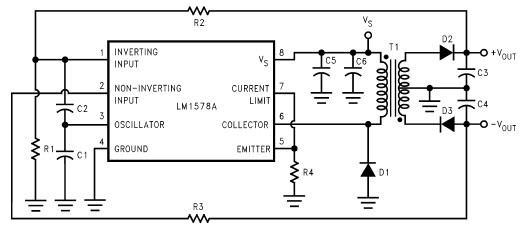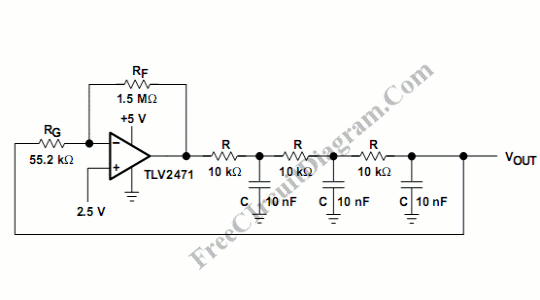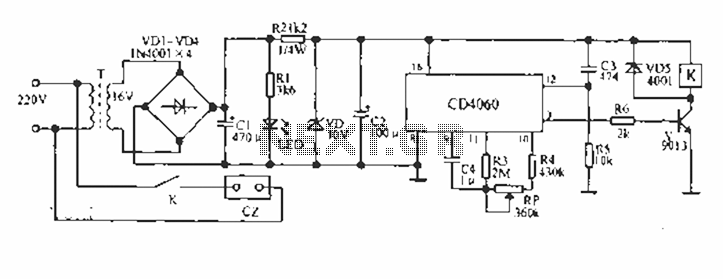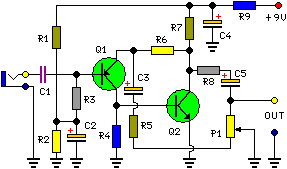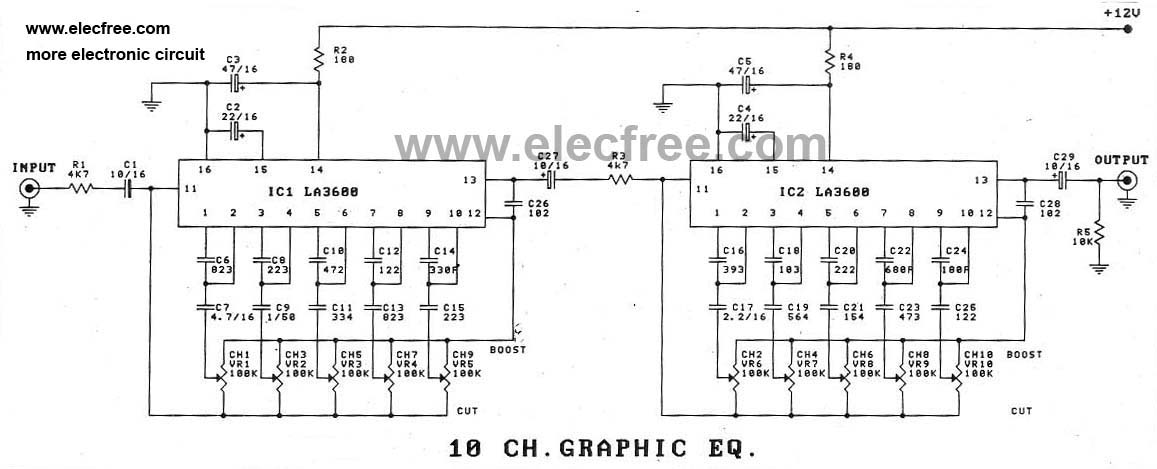
6-Band Graphic Equalizer circuit

The EQ-2 is a 6-band graphic equalizer circuit. Each band is controlled by potentiometers RV1-6, which are designed as faders for improved visual indication of adjustments. However, standard potentiometers can also be used as replacements. At the center position of each potentiometer, the gain is set to null (flat), while the terminals allow for a boost or cut of +/- 15 dB. For stereo operation, the circuit is duplicated.
The EQ-2 circuit functions by dividing the audio frequency spectrum into six distinct bands, allowing for precise control over the tonal quality of the audio signal. Each band features a dedicated fader, which enables the user to adjust the gain for that particular frequency range. The faders provide a visual representation of the adjustments made, facilitating easier manipulation during audio mixing or sound reinforcement.
The circuit typically employs operational amplifiers (op-amps) in a band-pass filter configuration for each frequency band. The design ensures that only the desired frequency range is affected by the adjustment of the corresponding fader. The flat gain position at the center of the fader ensures that the audio signal remains unaltered when no adjustments are made.
For the implementation of stereo operation, two identical EQ-2 circuits are used, one for the left audio channel and one for the right. This configuration maintains the stereo image and ensures that both channels can be equally adjusted to achieve a balanced sound output.
The EQ-2 circuit is suitable for various applications, including home audio systems, professional sound reinforcement, and recording studios. Its flexibility and user-friendly interface make it a valuable tool for audio engineers and enthusiasts seeking to enhance their sound mixing capabilities.The EQ-2 it is a circuit of graphic equalizer 6 band of regulation. Each band is regulated from the potesometers RV1-6, that are, for better optical indicate of regulations, Fader. This does not mean that we cannot him replace with simply potesometer. In the center of regulation potesometer, the gain is null (flat), but in terminal has +/- 15 db, boost or cutting off, respectively.
For stereo operation, it will be supposed two times.. 🔗 External reference
The EQ-2 circuit functions by dividing the audio frequency spectrum into six distinct bands, allowing for precise control over the tonal quality of the audio signal. Each band features a dedicated fader, which enables the user to adjust the gain for that particular frequency range. The faders provide a visual representation of the adjustments made, facilitating easier manipulation during audio mixing or sound reinforcement.
The circuit typically employs operational amplifiers (op-amps) in a band-pass filter configuration for each frequency band. The design ensures that only the desired frequency range is affected by the adjustment of the corresponding fader. The flat gain position at the center of the fader ensures that the audio signal remains unaltered when no adjustments are made.
For the implementation of stereo operation, two identical EQ-2 circuits are used, one for the left audio channel and one for the right. This configuration maintains the stereo image and ensures that both channels can be equally adjusted to achieve a balanced sound output.
The EQ-2 circuit is suitable for various applications, including home audio systems, professional sound reinforcement, and recording studios. Its flexibility and user-friendly interface make it a valuable tool for audio engineers and enthusiasts seeking to enhance their sound mixing capabilities.The EQ-2 it is a circuit of graphic equalizer 6 band of regulation. Each band is regulated from the potesometers RV1-6, that are, for better optical indicate of regulations, Fader. This does not mean that we cannot him replace with simply potesometer. In the center of regulation potesometer, the gain is null (flat), but in terminal has +/- 15 db, boost or cutting off, respectively.
For stereo operation, it will be supposed two times.. 🔗 External reference
